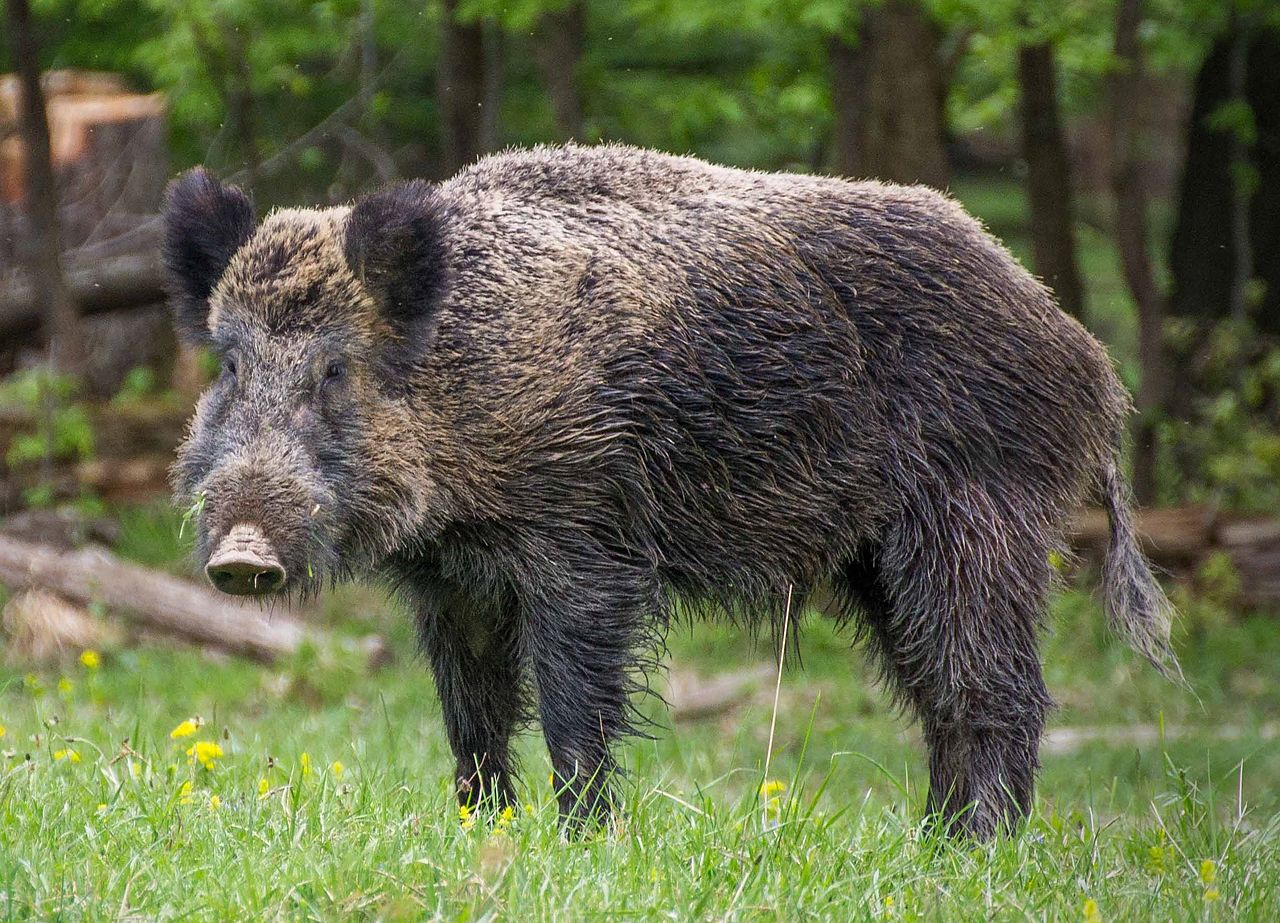Boar
Basic Information
Anatomy
The wild boar is a bulky, massively built suid with short and relatively thin legs. The trunk is short and massive, while the hindquarters are comparatively underdeveloped. The region behind the shoulder blades rises into a hump and the neck is short and thick to the point of being nearly immobile. The animal's head is very large, taking up to one-third of the body's entire length. The eyes are small and deep-set and the ears long and broad. The species has well developed canine teeth, which protrude from the mouths of adult males. The middle hooves are larger and more elongated than the lateral ones and are capable of quick movements.
Genetics and Reproduction
The average litter consists of four–six piglets, with the maximum being 10–12. The piglets are whelped in a nest constructed from twigs, grasses and leaves. Should the mother die prematurely, the piglets are adopted by the other sows in the sounder.
Ecology and Habitats
The wild boar inhabits a diverse array of habitats from boreal taigas to deserts.
Dietary Needs and Habits
The wild boar is a highly versatile omnivore, whose diversity in choice of food is comparable to that of humans. Their foods can be divided into four categories:
Rhizomes, roots, tubers and bulbs, all of which are dug up throughout the year in the animal's whole range; Nuts, berries and seeds, which are consumed when ripened and are dug up from the snow when abundant; Leaves, bark, twigs and shoots, along with garbage; Earthworms, insects, mollusks, fish, rodents, insectivores, bird eggs, lizards, snakes, frogs and carrion.
Additional Information
Social Structure
The species lives in matriarchal societies consisting of interrelated females and their young (both male and female). Fully grown males are usually solitary outside the breeding season.
Perception and Sensory Capabilities
Its sense of smell is very well developed to the point that the animal is used for drug detection. Its hearing is also acute, though its eyesight is comparatively weak, lacking color vision and being unable to recognize a standing human 10–15 meters away.
Symbiotic and Parasitic organisms
Predators includes wolves, okurinu, leopards, tigers, lamia, wyverns, fire dragons, storm dragons.
Scientific Name
Sus scrofa
Lifespan
10 - 14
Conservation Status
Least Concern
Average Height
75–80 cm (30–31 in)
Average Weight
75–100 kg (165–220 lb)
Average Length
150 cm (59 in)




Comments